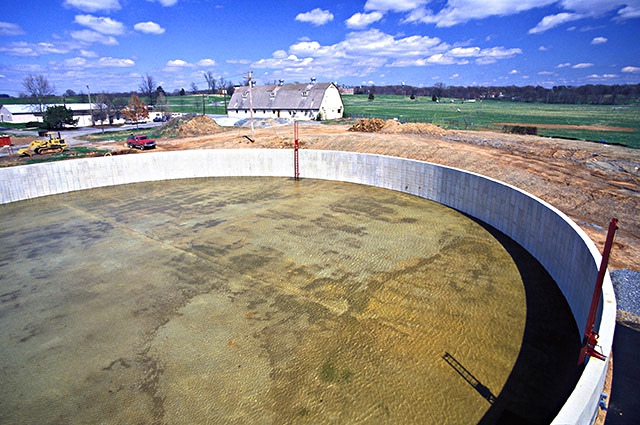
Greenhouse Gases
Dairy products are an important part of the human diet and have been established as a primary source of protein and nutrients.
Dairy products are an important part of the human diet and have been established as a primary source of protein and nutrients.
The production of this important source of nutrients can lead to some environmental consequences that need to be understood in order to reduce their impact.
One important environmental impact of dairy operations is the emission of greenhouse gases, mainly methane produced from the cow (enteric fermentation) and manure, nitrous oxide from soils and manure, and carbon dioxide from the combustion of fuels and electricity. The majority (nearly 80%) of these gases are emitted from farm operations, the focus of this initiative.
Studies quantifying these emissions have adopted life cycle assessment (LCA) techniques, a preferred methodology to estimate the carbon footprint of dairy systems.
What are greenhouse gases?
A greenhouse gas (GHG) is a gas that traps heat in the atmosphere. Greenhouse gases occur naturally (e.g. water vapor) and are needed to maintain average temperatures warm enough to allow the organisms that live on earth to survive. However, when the concentration of these gases in the atmosphere is too high, the temperature rises creating a global warming effect. In recent years, human activities have been increasing the emission of these gases pushing average temperatures high enough to cause negative environmental consequences. Therefore, it is critical to develop strategies to reduce the production of these emissions and to adapt to the rising temperatures.
Carbon dioxide is the most abundant greenhouse gas emitted by human activities, but methane and nitrous oxide have a higher global warming potential, meaning greater warming impact, and are largely produced from agricultural practices. The measure of how much energy a greenhouse gas traps in the atmosphere over a period of time (commonly 20 or 100 years) relative to carbon dioxide is called global warming potential. Livestock production is one of the major contributors to both methane and nitrous oxide , and dairy is a significant contributor to this category.
Carbon dioxide
Carbon dioxide (CO2) is the most abundant greenhouse gas and is naturally occurring from all aerobic organisms through respiration and from the decomposition of organic materials. Carbon dioxide that is emitted from natural sources is called biotic emissions. Carbon dioxide is also emitted from the combustion of wood and fossil fuels to produce electricity and energy for the transportation, industrial, residential, and commercial sectors. This last source of carbon dioxide has been the target of climate change strategies as it is caused by human activities, or abiotic emissions. Carbon dioxide from dairy farms is emitted in both biotic and abiotic forms from the use of energy resources for feed production, milking operations, and manure management.
Methane
Methane (CH4) is a greenhouse gas produced largely from bacteria that live in soil, water, and the stomachs of ruminant animals. Methane is of particular concern as it is 28 to 34 times more effective in warming the environment than carbon dioxide. In the U.S., more than one third of methane emissions come from livestock, as a result of enteric fermentation (basically digestion gases) and manure production. This trend also applies at the dairy farm level.
Nitrous oxide
Nitrous oxide (N2O) is a naturally occurring greenhouse gas emitted from sources as part of the earth’s nitrogen cycle (see fact sheet on nitrogen efficiency and cycling). However, the concentration of this gas in the atmosphere has increased in recent decades due to the application of fertilizers and animal manures. Nitrous oxide is the second highest source of greenhouse gas emissions after methane produced from the cow (enteric methane) at the dairy farm level and is of major importance as it has a global warming potential that is 264 times higher than carbon dioxide.